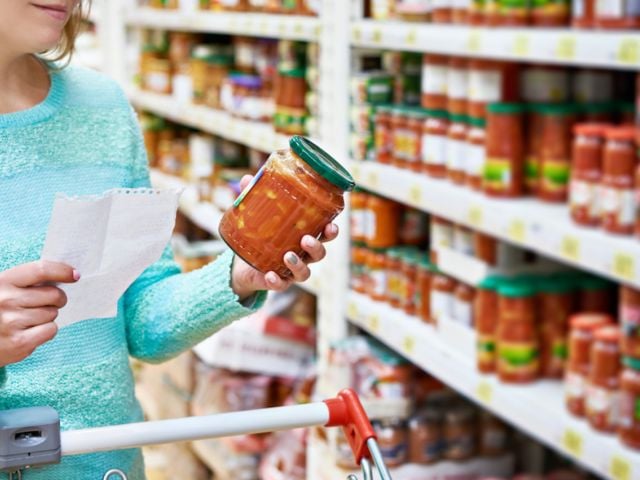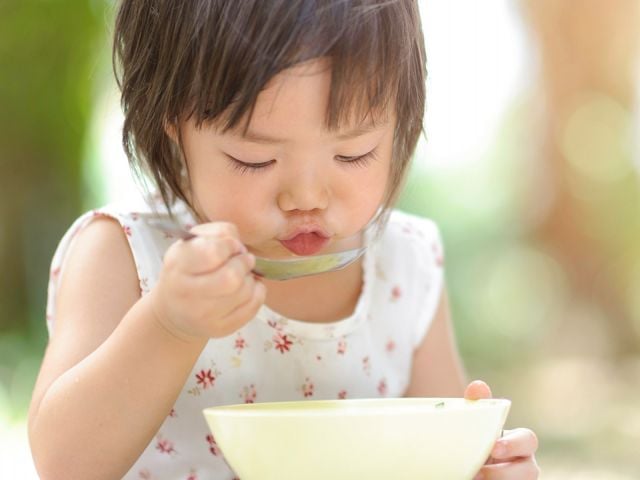
Whether you're entertaining 20 of your nearest and dearest, baking cookies with the kids, or just filling up a bowl of chips, chances are you're going to spend a lot of time in the kitchen this holiday season. So will we. And, like you, we want it to be a green and healthy holiday kitchen.
Go ask Jane! Jane Houlihan (right), EWG's Senior Vice President for Research and the visionary behind our popular cosmetics database Skin Deep, is the person EWG staffers go to for tips on greening our kitchens (or our anything, really!).
Whether it's for smart tips on storing leftovers or food choices that are better for your health and the environment, Jane's our go-to this time of year. Her tips are sure to make it a bit easier for you to shop for healthier foods and stock your holiday kitchen, so that you can truly enjoy peace of mind through the winter holidays.
As a busy mother with environmental health on her mind, Jane has lots of ways to green her holiday celebrations -- and now she's letting us in on how she does it. So go ahead, make your holiday kitchen safer and healthier (thanks, Jane!).
It's actually pretty easy -- just follow these simple tips as you shop, cook and eat together:
1. Choose food low in added chemicals and pollutants Food can contain ingredients we don't want to eat -- from pesticides to hormones to artificial additives to food packaging chemicals. Some simple tips to cut the chemicals:
- Buy organic when you can. I make sure fresh fruits and vegetables are on the menu, and I go organic when I can. Organic produce is grown without synthetic pesticides (I prefer my dinner without, thanks!). Organic meat and dairy products also limit your family's exposure to growth hormones and antibiotics.
- It's OK to choose non-organic from our "Clean 15" less-contaminated conventional fruits and vegetables, too. EWG's Shopper's Guide to Pesticides ranks popular fruits and vegetables based on the amount of pesticide residues found on them. Check out our Shopper's Guide to Pesticides (and get the iPhone App).
- Cook with fresh foods, not packaged and canned, whenever you can. Food containers can leach packaging chemicals into food, including . Instead, head for fresh food or prepared foods in glass containers. Pick recipes that call for fresh, not canned, foods.
I like to check in with EWG's Healthy Home Tip: Go organic and eat fresh foods when planning grocery trips.
2. Use non-toxic cookware Using a great pan makes a huge difference when I cook. I skip the non-stick so that my kids (and our new puppy) don't have to breathe toxic fumes that can off-gas from non-stick pans on high heat. Non-stick cookware is in most American kitchens. Is it in yours?
- For safer cooking, EWG suggests cast iron, stainless steel and oven-safe glass. Yes, there are many new products on the market, but most companies won't tell you exactly what they are. Even if they're advertised as "green" or "not non-stick," manufacturers do not have to release their safety data to the public.
- Cook safer with non-stick if you're 'stuck' with it. You can reduce the possibility of toxic fumes by cooking smart with any non-stick cookware you happen to own: never heat an empty pan, especially at high heat, don't put it in an oven hotter than 500 degrees F, and use an exhaust fan over the stove.
Learn more about cooking safely in our Healthy Home Tip: Skip the non-stick.
3. Store and reheat leftovers safely Leftovers can extend the joy of a holiday -- by giving you a break from the kitchen! But be sure to avoid plastic when storing and (especially) when heating them. Here's why -- and how:
- Skip the plastic food storage containers if you can. The chemical additives in plastic can migrate into food and liquids. Ceramic or glass food containers (like Pyrex) are safer.
- Don't microwave food or drinks in plastic containers, even if they claim to be "microwave safe." Heat can release chemicals into your food and drink. Microwaves heat unevenly, creating hot spots where the plastic is more likely to break down.
- If you do use a plastic container you already own, handle it carefully. Use it for cool liquids only; wash plastics on the top rack of the dishwasher, farther from the heating element (or by hand!); use a paper towel instead of plastic wrap to cover food in the microwave. Also, avoid single-use plastic whenever you can -- reusing it isn't safe (it can harbor bacteria), and tossing it fills up landfills (and pollutes the environment).
Read more about heating and storing food safely in EWG's Healthy Home Tip: Pick plastics carefully.
I hope these tips make having a green holiday easier for you -- Happy Holidays!
PS - If you're looking for a great, green cookbook (as a gift or for yourself!) - look no further than EWG President Ken Cook's personal favorites.



